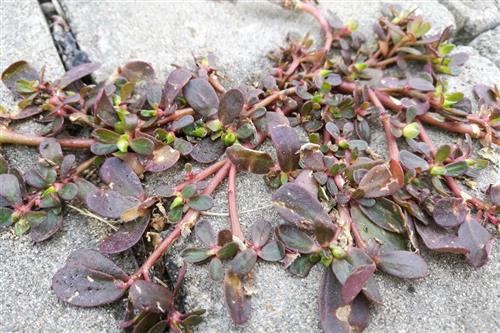In recent years, the health benefits of wild vegetables have gradually become known. Even urban residents have the habit of eating wild herbs. Then, what wild vegetables have health benefits? Let's take a look.
12 wild herbs have magical health benefits
1. Mother-in-law D: good for the liver
Mother-in-law D, also known as dandelion, many people have seen in the wild. Its pollen contains vitamins, linoleic acid, leaves and leaves contain choline, amino acids and trace elements. The main function of mother-in-law Ding is detoxification, swelling and diuresis. It has a broad-spectrum antibacterial effect, but also stimulate the body's immune function, to achieve the role of gallbladder and liver protection. It can be eaten raw, fried or souped, such as jellyfish mixed with her mother-in-law, her mother-in-law roasted pork; but also with green tea, licorice, honey, etc., tune into a cup of detoxification, swelling of the mother-in-law Ding green tea.

2. Mozzarella: Treating Diabetes
Mozzarella, also known as purslane, longevity food. It is generally reddish-brown and leaves with hypertrophy. It is long obovate and named because it resembles a fang. It contains various nutrients such as protein, fat, thiamine, riboflavin, and ascorbic acid. Due to the relatively large number of acid-containing substances, they feel slightly sour when eaten. The medicinal function of the mozzarella is detoxification, cooling blood to stop bleeding. Because it is rich in norepinephrine, can promote insulin secretion in the islet gland, regulate the process of glucose metabolism, reduce blood glucose concentration, maintain blood sugar constant, so there is a certain role in the treatment of diabetes. In addition, it also contains an unsaturated fatty acid that inhibits the production of cholesterol and triglycerides and protects the cardiovascular system. There are many ways to eat it. After eating it, you can stir it up, salad, and stuffing. For example, ketchup scrambled eggs, steamed hors d'oeuvre stuffed buns, or boiled hot garlic dents.
3. Platycodon: Anti-ulcer
The bellflower is also known as the Mingye dish and the monk's hat. The Korean people call it Doraji. Its branches can open blue flowers. What we usually eat is the root of tangerine root, which has antitussive, analgesic, antipyretic, sedative, hypoglycemic, anti-inflammatory, anti-ulcer, anti-tumor and antibacterial effects. Wonderful reading: Brewing and Efficacy of Red Jujube Tea
4. Bracken: Anshen
Bracken, also known as fern and head dishes, is more common in wild vegetables. When the fern leaves are curled, it shows that it is tender and leaves the leaves to stretch. Eating bracken can play a role in clearing heat and falling down the stomach, reducing blood stasis, and diuretic and tranquilizing. However, dried bracken or salted bracken should be immersed in water before eating to restore it. The common ways to eat are fried ribs, bracken, bracken, and bracken.
5. bitter herbs: inhibition of leukemia
The scientific name of bitter herbs is called ramie or radicchio. The stems are yellow-white; the leaves are round-lanceolate, green on the surface, and gray-green on the back; the flowers are bright yellow and tongue-shaped. Sun dried bitter herbs are rich in potassium, calcium, magnesium, phosphorus, sodium, iron, manganese, zinc, copper and other elements. Bitter herbs can heat dampness, swelling, pus, detoxification, cooling blood to stop bleeding. The bitter water decoction and concentrated ethanol extract have inhibitory effects on acute lymphocytic leukemia, acute and chronic myelogenous leukemia. The common ways to eat are: garlic, bitter herbs, soy sauce and bitter herbs, and bitter herbs such as pork liver.
6. Leek: tonic to strengthen the spleen
The flowering period of leeks is from April to June. In the Tanabe area, people can often see the small white leeks. Its main therapeutic role is cooling blood to stop bleeding, tonic and spleen, clearing heat and water. In spring we pick some tender stems and leaves of the leeks or overwintering buds, and then we can mix salads, dipping sauces, soups, stuffing, and fried foods, and we can make delicious leeks.